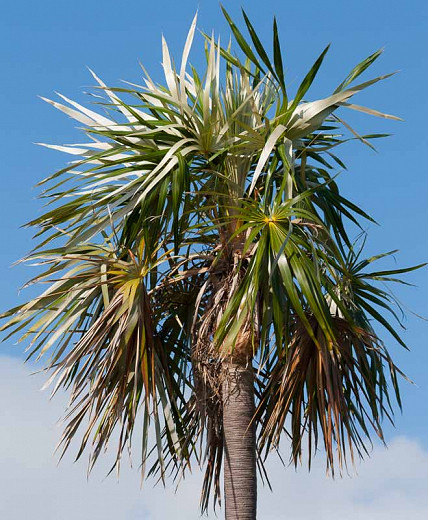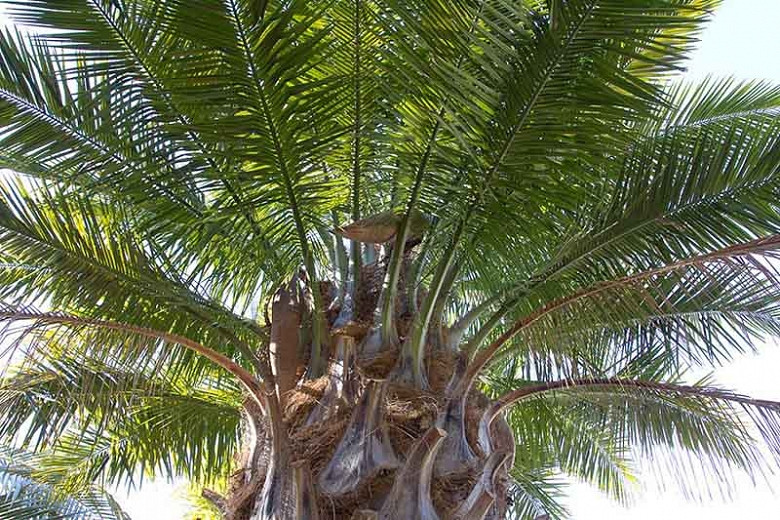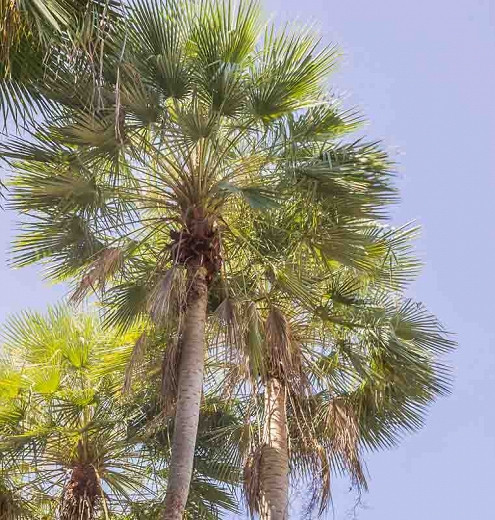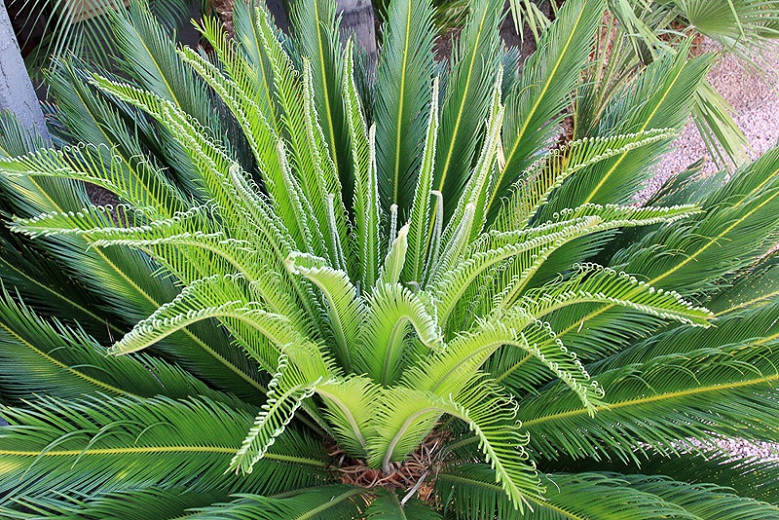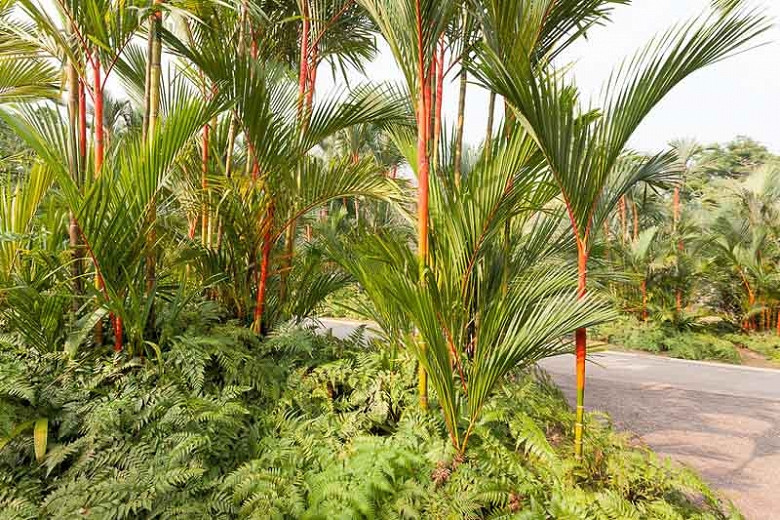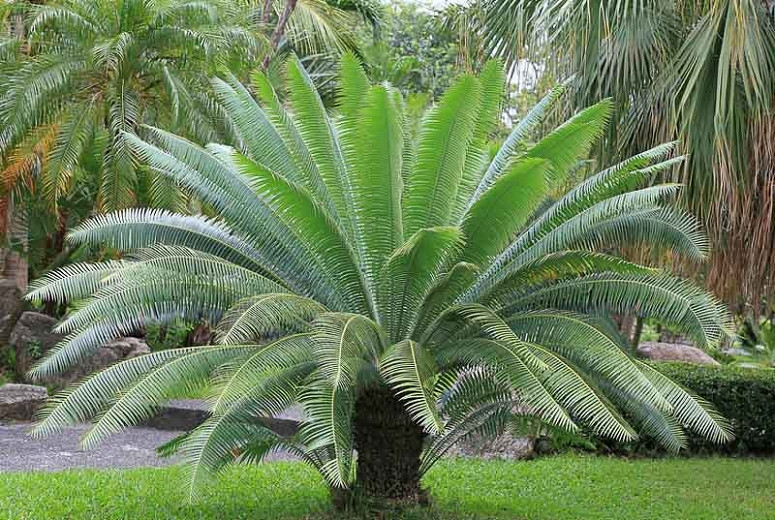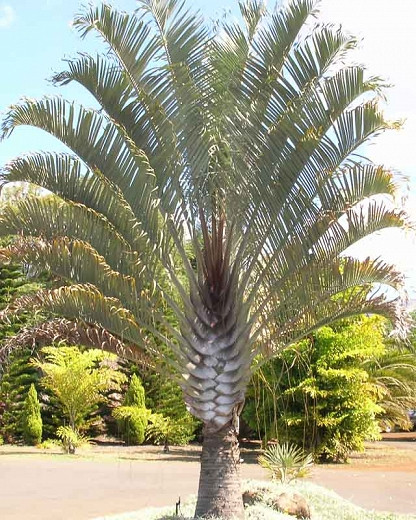Coccothrinax argentata (Florida Silver Palm)
Coccothrinax argentata (Florida Silver Palm) is a slender evergreen palm with a smooth vertical trunk and attractive fan-shaped leaves. The deeply divided palmate leaves, 2 ft. across (60 cm), are shiny blue-green with silvery undersides. Fragrant, creamy-white flowers are borne in profusion on 2-foot-long stalks (60 cm), hidden among the leaves during the summer. They give way to small, round, purple to black fruits in late summer and fall. The fruits are devoured by birds and other wildlife. The thin trunk, 6 in. wide (15 cm), is usually smooth and gray, sometimes covered with woven, burlap-like fiber. Native to south Florida, southeast Mexico, Colombia and to the West Indies, Florida Silver Palm provides a beautiful blue accent in the landscape. It is a slow-growing palm, adding only 5 in. (12 cm) per year, making is useful for container planting. Salt and drought tolerant, hurricane wind resistant, Florida Silver Palm is an excellent accent tree for coastal locations. It is also very useful in narrow spaces thanks to its slender, erect form. It is listed as threatened by the state of Florida and should be acquired only from properly licensed sources.
- Grows up to 5-20 ft. tall (150-600 cm) and 5 ft. wide (150 cm).
- Easily grown in dry to moist, well-drained soils in full sun to part shade. Highly drought tolerant once established. Can tolerate salty wind and salt spray without injury, but does not tolerate salty or brackish water.
- No serious pest or disease issues.
- Propagate by seed.
- Old leaves require minor pruning.
- Native to south Florida, southeast Mexico, Colombia and to the West Indies, where it is found in the Bahamas, the southwest Caribbean and the Turks and Caicos Islands.
Requirements
| Hardiness | 10 – 11 |
|---|---|
| Plant Type | Palms – Cycads |
| Plant Family | Palms – Cycads |
| Exposure | Full Sun, Partial Sun |
| Season of Interest | Spring (Early,Mid,Late)Summer (Early,Mid,Late)FallWinter |
| Height | 5' – 20' (150cm – 6m) |
| Spread | 4' – 5' (120cm – 150cm) |
| Water Needs | Low, Average |
| Maintenance | Low |
| Soil Type | Clay, Loam, Sand |
| Soil pH | Acid, Alkaline, Neutral |
| Soil Drainage | Moist but Well-Drained, Well-Drained |
| Characteristics | Showy, Evergreen |
| Native Plants | United States, Southeast, Florida |
| Tolerance | Drought, Salt |
| Attracts | Birds |
| Garden Uses | Patio and Containers |
| Garden Styles | Mediterranean Garden |
